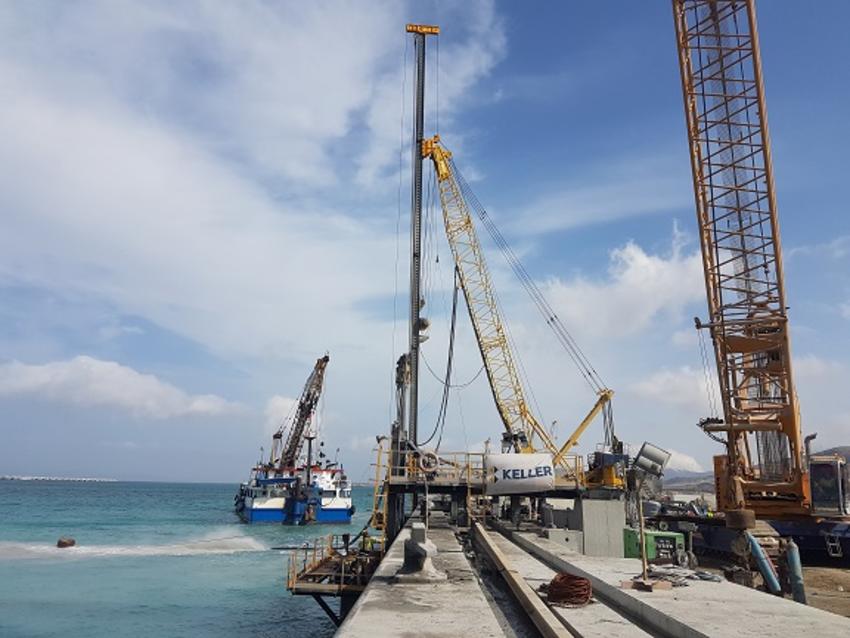When it’s completed in 2019, the expanded Tanger-Med will be the largest port in Africa, handling an estimated nine million containers a year. And Keller France has played a significant role in its expansion, bringing innovation and expertise to a challenging retaining wall project.

Opened in 2007, the Tanger-Med port sits on the north coast of Morocco, close to the Iberian peninsula, along a strategically important maritime trade route between Europe, North Africa and the rest of the world.
Keller France was involved in the original port’s construction in the early 2000s, carrying out vibro-compaction works. More recently, the business unit won and successfully delivered a design-build project to reinforce a section of the port’s quay as part of a major development.
An innovative solution
The port’s expansion – known as Tanger-Med II – includes increasing the number of container terminals from two to four and constructing a new 1.6km quay. Part of the work also includes deepening the berths from 16m to 18m along 450m of the existing quay, and it’s here that Keller France has brought its world-leading expertise to the project.
Dominique Boisseleau, Overseas Sales Manager for Keller France, explains: “The client, Tangier Mediterranean Special Agency (TMSA), was looking for a high-level geotechnical contractor with a very strong design office. We came up with an attractive solution for the retaining wall that won us the tender.
“We wanted to find a solution that didn’t involve concrete, as that can be very difficult at depths of 16m. Part of the brief was that the design had to last 100 years, so our engineers came up with a retaining wall made of tube piles. We calculated that the strength of the tubes installed into the bedrock would be sufficient to assure the stability of the berth after dredging.”
Challenging conditions and a demanding schedule
Awarded the contract in March 2017, the team carried out a geotechnical survey and presented the final design solution in July. During that time, equipment and tools had to be coordinated: a new Kobelco 275-tonne crane was shipped from Japan, a vertical travel lead system to guide the piles came from Canada, the piles were made in Spain, and other vital equipment was ordered from Finland.
Once everything was in place, the team installed a total of 411 piles – 15m long, 101.6cm diameter. The piles were embedded about a metre apart using the ‘down-the-hole’ method with permanent casing advancement system.
Conditions were quite challenging. In some parts the team encountered sandstone and in others very hard pelite mud rock – but they succeeded in installing all the piles to meet the demanding schedule.
Raising our profile
Keller was also commissioned as main contractor on the job, coordinating subcontractors for auxiliary activities including the dredging, which was completed at the end of March. With port operator APM Terminals (part of the giant Maersk group) now moving in its first cranes, the port is well on its way to becoming one of the biggest and busiest in the world.
To meet the growth in container shipping, forecast to be between 1.9% and 3.2% over the next 50 years, ship owners are increasing their fleet, and the capacity and draught of their vessels, and in turn demanding more and deeper ports. Hence our strategy to extend near-shore marine capabilities, particularly for port developments.
Dominique says that the success of this project at such a strategically important site for Morocco will not have gone unnoticed across the rest of Africa and the world.
“Many ports in Africa, particularly those in the west, were built in the 1960s or 70s and need to be upgraded to cater for larger vessels,” he says. “Given the success of this project and Keller’s ability to come up with an innovative solution, we’re sure this will lead to many future opportunities to bring our expertise to more significant projects of this size and complexity.”